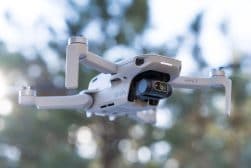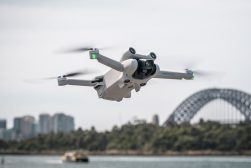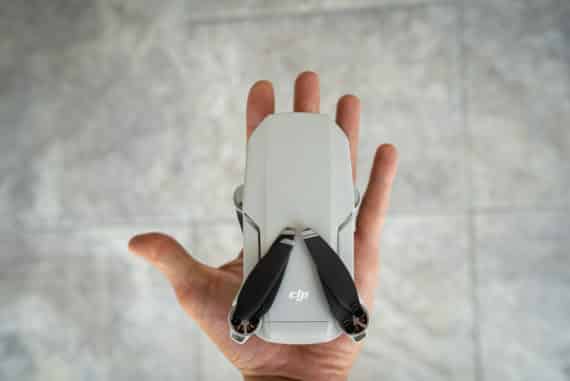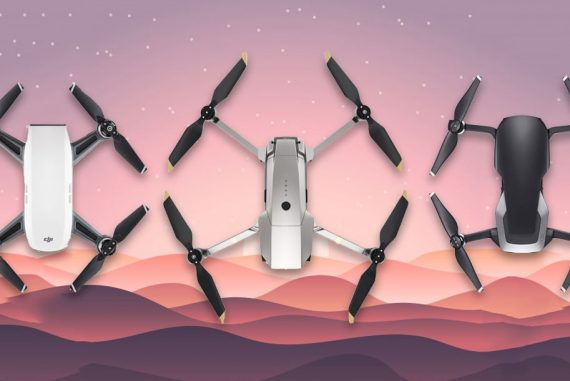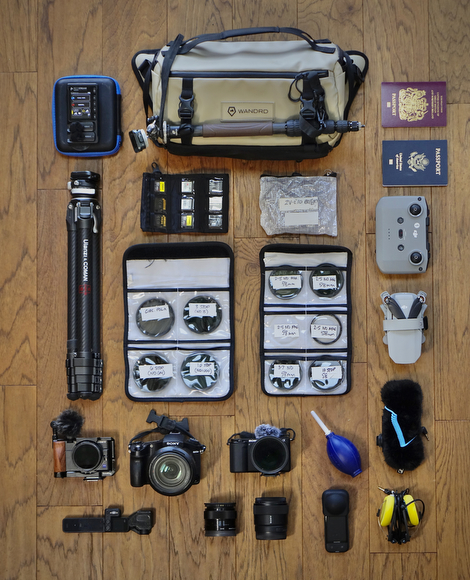
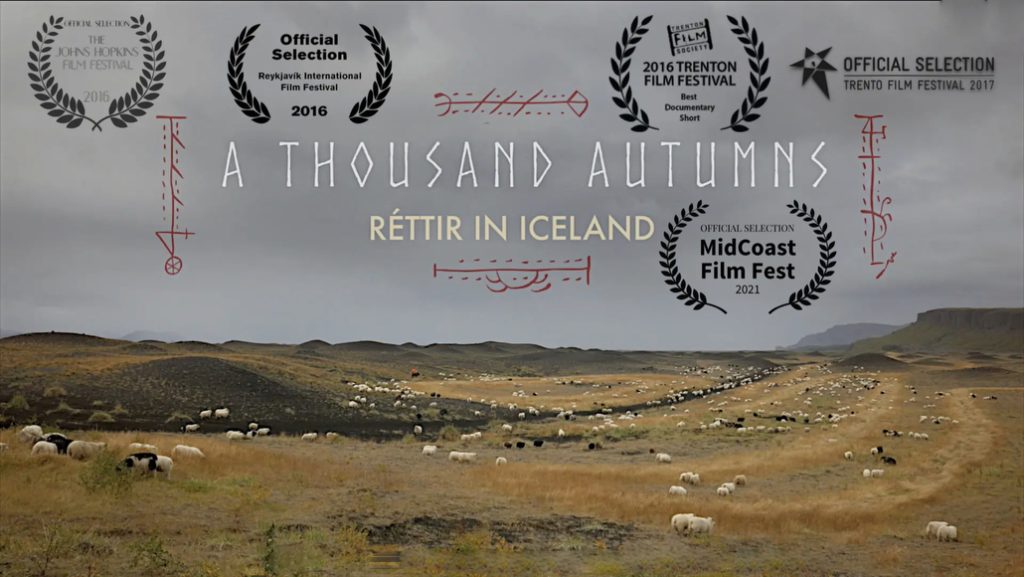
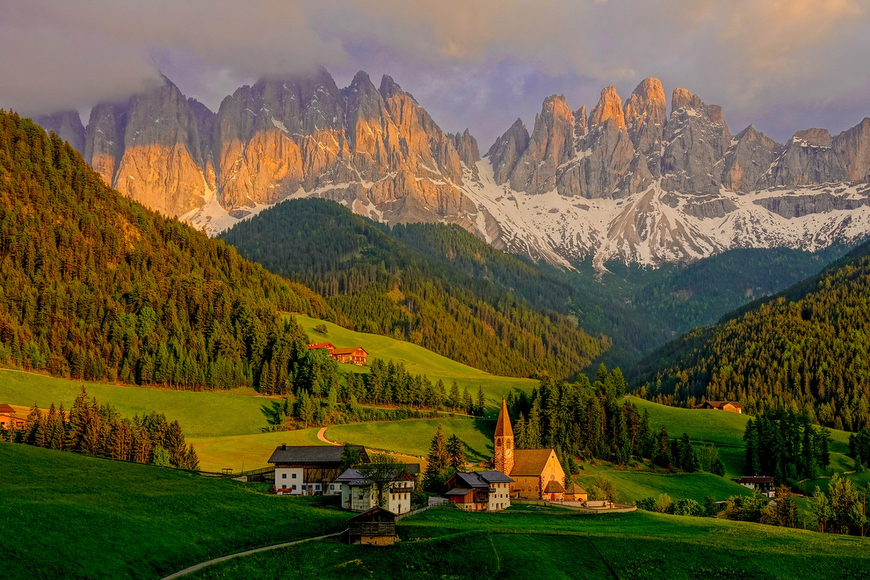
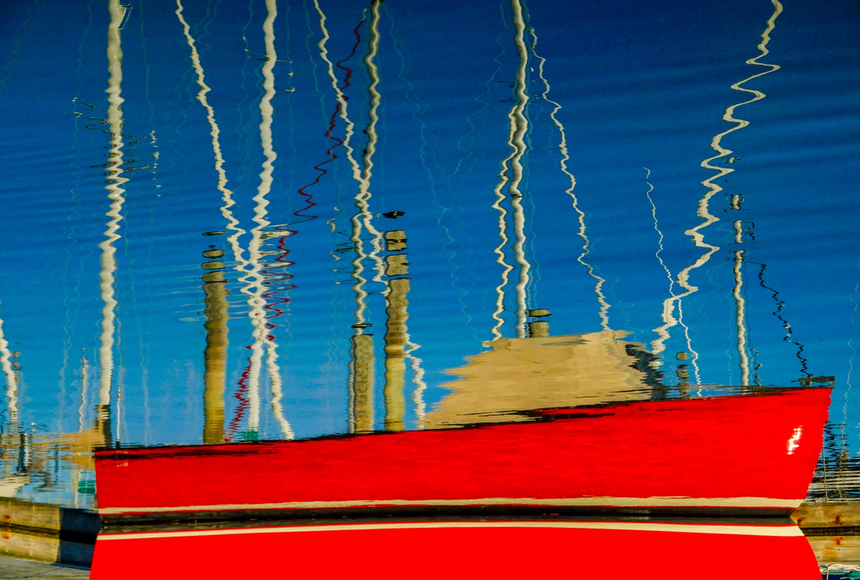
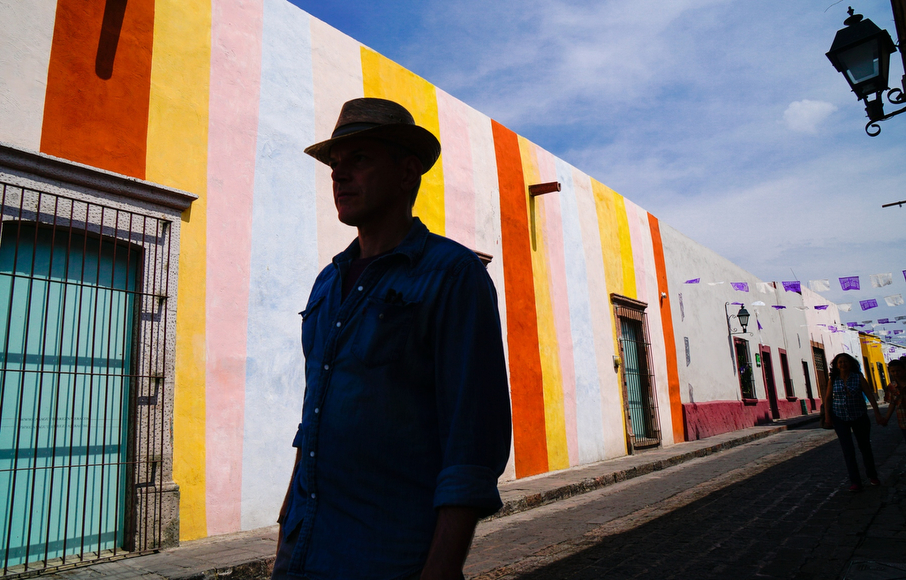
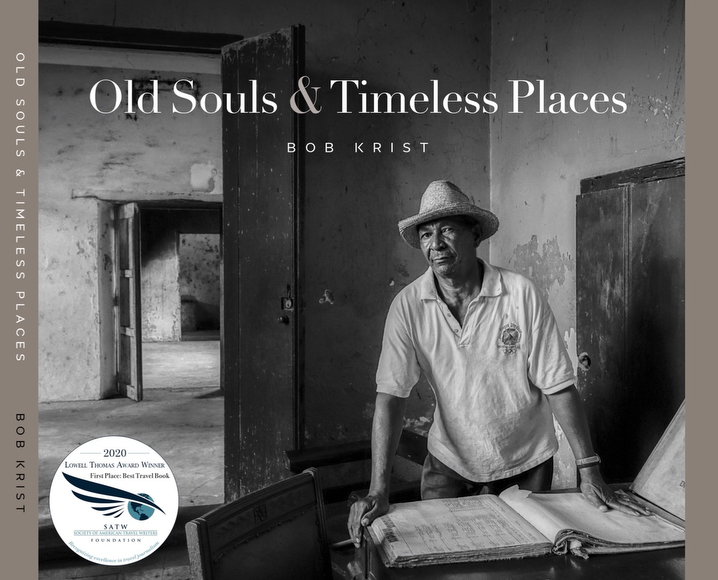
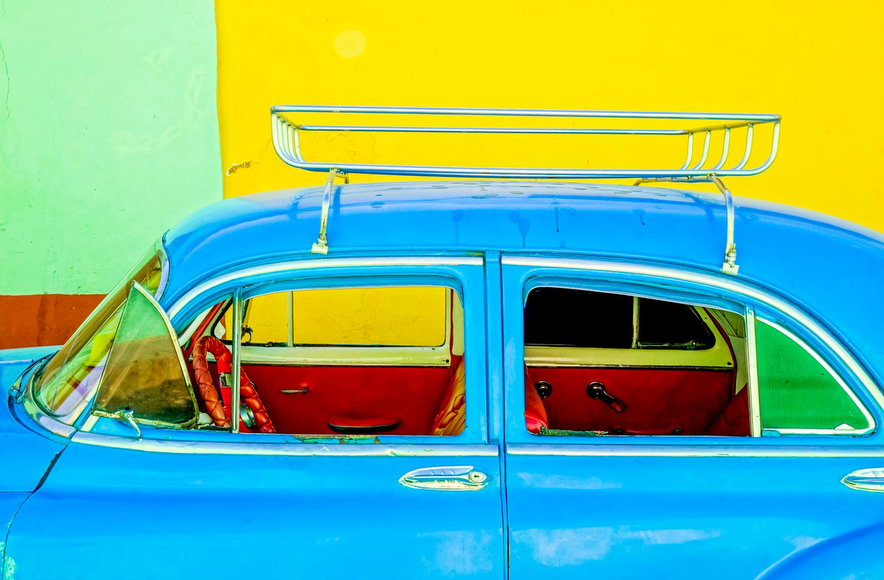
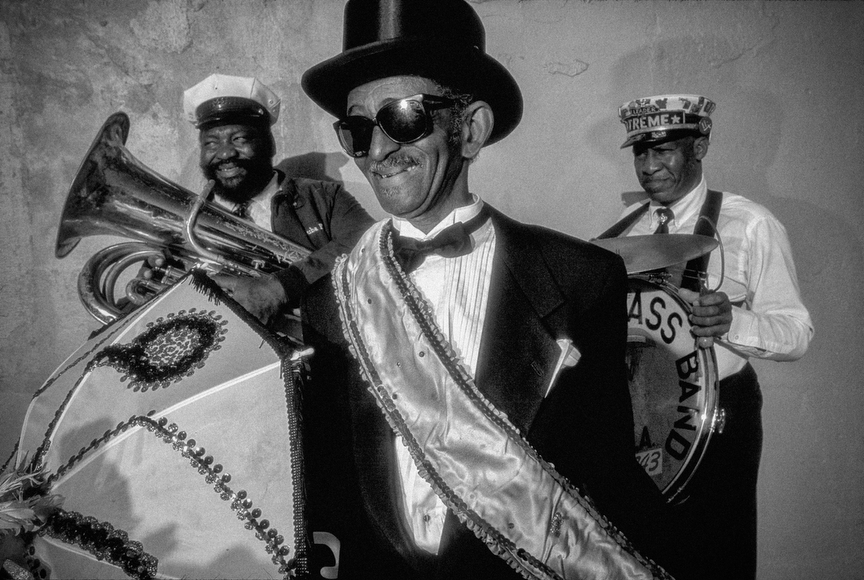
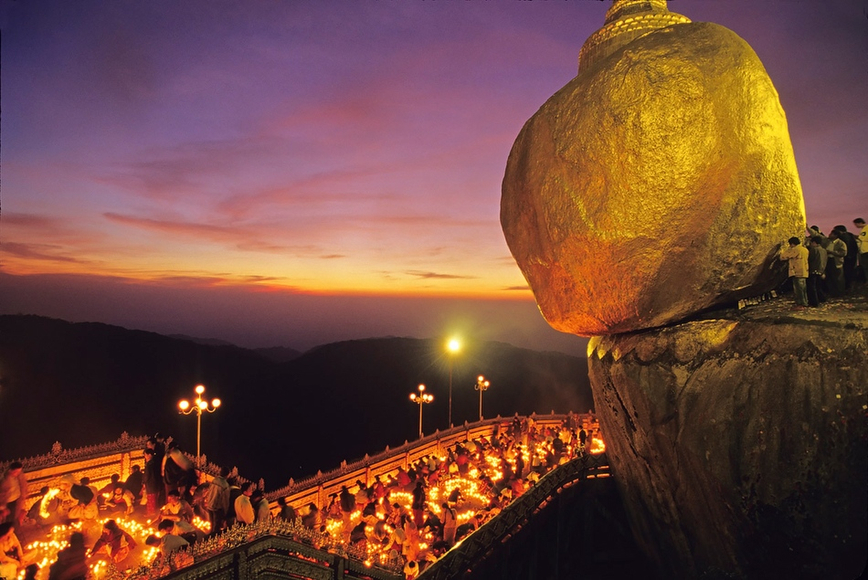
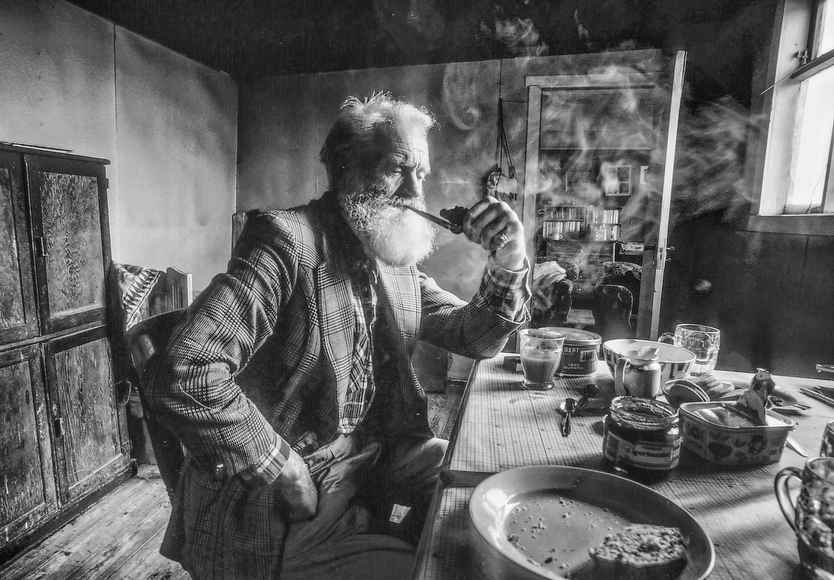

Bob Krist
Travel | Last Updated: June 28, 2023
I got my start in the theater and bought my first camera in college to document a two-year tour of Europe when our small troupe won a grant to showcase new American playwrights.
I became a decent amateur photographer and, after finishing up the tour and college, I kicked around as an actor in regional theater in San Francisco and Philadelphia, shooting headshots and portfolios to supplement my meager actor’s pay and make ends meet.
In 1976, when I was a long time between engagements, I got a job at a small newspaper in Union City, New Jersey, and spent five years learning how to tell stories with photographs.
We covered everything from small stories about the displacement of old sailors in a home in Hoboken to make room for a supermarket parking lot, to the big stories of the day, like the Son of Sam killings.
It was an invaluable experience on how to think fast, react quickly, make your way in chaotic situations, and of course, make photographs.
After five years of this, I knew I didn’t want to make a career of newspaper photojournalism, I wanted to go back to traveling.
I had won a number of photojournalism awards and that got me an appointment to show my portfolio to the director of photography of National Geographic.
He was unimpressed with my photo skills but loved my story proposals and gave me a chance and assigned me to shoot a story about my home state of New Jersey, not exactly everyone’s dream of a NG assignment.
I managed my way through that one, not without difficulties, and started working for NG and a number of other travel magazines like Travel & Leisure, Travel Holiday, Islands, Gourmet, and several European publications.
Assignments from these publications, along with corporate work for many Fortune 100 companies, kept me on the road for most of my career, shooting in over one hundred and sixty countries on all seven continents.
The rise of extreme photo manipulation software (and now AI) saw me lose my interest in still photography and when video capabilities started appearing in still cameras I tried my hand at telling my stories in motion.
I started learning video, filmmaking techniques, and editing at the age of fifty-eight. So for the last thirteen years, my passion has been making short-form documentaries about travel, traditions, and the work of non-profits.
In addition to my video work, I did work on a book of black-and-white personal work, called Old Souls & Timeless Places, which was released in 2020. It won First Place in the Travel Book category of the Lowell Thomas Travel Journalism Awards.
Last year, I traveled the world on a year-long contract to produce educational travel documentaries for Wondrium.com, (formerly called the Great Courses). I plan to continue that style of educational travel documentary on my own YouTube channel in the near future.
My gear has evolved from that classic photojournalist’s Domke shoulder bag with two SLRs (or DSLRs after 2003) and the three so-called “Holy Trinity” zooms Sony 16-35mm f/2.8, Sony 24-70mm f/2.8, and Sony 70-200mm f/2.8 and a fast Sony 25mm f/1.4 and Sony 85mm f/1.4 primes, into something smaller, lighter and more video-centric.
I am not, after all, as young and as strong and willing to lug a heavy bag all day and half the night, as I used to be. Plus, video has some different needs for example I haven’t used a flash in the better part of a decade as continuous LED lights are the way I roll now for video.
Here’s my current configuration. It’s the basic setup along with a couple of LED tubes and lightweight light stands that I traveled the world with last year for my Wondrium series, “Off the Beaten Path.”
Sony RX10 IV – I know, I know, the common wisdom is that a bridge camera with a one-inch sensor can’t do professional work. Yes, it may not have the dynamic range or low light capability of a larger sensor camera, but that only applies in certain situations.
In real life, and practical terms, this is, hands down, the most versatile, useful camera for travel content, video, or stills, I have ever owned. I think I could have probably shot about ninety percent of my magazine work with this camera, were it available back in the day.
It does 4K video in 24, 25, and 30 and HD in 60 and 120 fps. It has a stunning, Sony 24-600mm f/2.8-4 Zeiss zoom that is optically superb and allows me to cover whatever comes my way.
In travel situations, you often have no control over what you’ll see so you have to be able to go in an instant from shooting a landscape, to a portrait, to a distant view of wildlife.
In a one-man band documentary filmmaking, it’s imperative to get as many different perspectives on a situation as you can as it unfolds and the tremendous range of this lens allows me to get coverage that I just would miss if I were constantly changing from wide, to zoom, to prime and back.
It has a mic jack, headphone jack, HDMI, and diopter adjustment. It’s getting a little long in the tooth as it is about four years old and Sony desperately needs to refresh it with 10-bit, 4K 60fps capability, and built-in ND filters. I’m not holding my breath anticipating these changes.
Sony ZV-e10 – this is a tiny, video-centric vlogging camera with an APSC-size chip. It handles low light really well and because it has interchangeable lenses, I can fill in the gaps and weaknesses of the RX10 IV.
It is really compact and the onboard mics aren’t too bad but I do miss an EVF so I may replace this with the new Sony APSC offering coming out this summer.
Sony RX100 VII – this is a great little camera with the same sensor as the RX10 IV. It has an equivalent 24-200mm Zeiss f/4 zoom, and a little pop-up EVF.
It’s an incredible little machine and if I don’t feel like lugging the RX10 IV in the bag, I’ll leave that behind and substitute this camera instead.
It’s especially useful when you don’t want to look professional or intimidating and the mic jack is great. Often, if I’m going ultra light, I’ll just take it. In the gear picture, it’s the one with a wooden handled cage and small Saramonic mini-shotgun.
Sony 10-20mm f/4 G Zoom – I don’t know if it’s a holdover from my still shooting days, but I really like wide and ultra-wide angle lenses, and this lens covers that 15-30mm range with power zoom, great optics, and construction.
When I feel constricted by the 24mm of the RX10IV, I reach for this lens.
Sony 11mm f/1.8 – this is a super wide, super fast, and very sharp lens that is great in low light! I can use it for doing camera standups. I don’t usually “vlog” per se, but if I have to introduce a segment, I’ll put this setup on a tripod and do my intro rather than walk and talk.
Sony 35mm f/1.8 OSS – this is a fast, quite normal lens with optical SteadyShot built in. It’s good for interviews and situations where I need a little soft bokeh. It’s tiny and sharp.
DJI Pocket 2 – this little 4K shooting gimbal cam is super convenient and versatile. Shoots a wonderful 4K 60fps video that punches way above its weight in terms of the quality out of a relatively small sensor.
I have the “creator’s kit” version that comes with its own little wireless mic if I need it. I have a wide-angle adapter and ND filters for both the wide adapter and the normal built-in lens.
Insta 360 X3 – this is a relatively new addition for me but I am learning the tremendous potential that 360 imagery has and its ability to simplify the life of a one-person show.
I have the ten-foot invisible selfie stick and it was great to use this setup on a recent sailboat trip around Grenada. It produced drone-like shots, and that was great because I am not the greatest drone pilot in the world, but I am getting better.
DJI Mini 2 Drone – this is a terrific little drone and because it’s under two hundred and fifty grams in weight, it is permissible to use without permits in a host of countries and situations where a bigger heavier drone would be forbidden.
I wish it were a little more capable in windy conditions and I wish it had a better way of connecting ND filters.
Its successor, the DJI Mini 3 Pro, has addressed all those problems and has added obstacle avoidance sensors as well, and is still under the magic weight!
So as soon as I crash or lose my Mini 2, I’m upgrading to the Mini 3 Pro!
Audio – good audio is just as important as video in filmmaking, maybe even more so. For my on-camera shotgun mic, I’ve recently settled on the Sennheiser MKE 400 which has an actual blimp around the mic capsule and shock mount making it very resistant to the wind.
When you add the luxurious black faux fur “dead cat” around the blimp, this mic has the best wind -resistance of any I’ve ever used. Wind noise has probably ruined more of my takes than foolish human errors.
It also has a built-in headphone jack, which is very useful when I’m using it with a camera that has a mic jack but no headphone jack like the Sony RX100 VII.
I’ve tried the Rode and the DJI wireless mics but I keep coming back to the French-made Picomics. Not only do they sound great, there are two tiny mics that are no bigger than tie clips and they are so much more discreet than the big plastic boxes you pin on your subject when you use Rode or DJI.
The mics charge in the receiver and the receiver has a nice big display and features buttons to navigate, rather than those annoying swipe screen menus.
It’s a terrific system and I’m convinced that it would be much more popular if their company had provided free review units to as many YouTubers as their competition from Rode and DJI did.
The Koss Porta Pro Headphones seen here with third-party yellow foam earpads are the most compact and useful small headphones I’ve found. They are very retro looking, which fits my demographic perfectly.
Filters – I carry two sizes of ND filters. For the RX10 IV, I carry several single-strength ND filters 3 stop, 6 stop, a Polarizer, and UV. I have never found a variable ND that retains sharpness with a wide zoom range.
The single-strength filters are fine, and I use a magnetic mounting system (XUME) to change them quickly.
I’ve upsized and standardized all my other lenses to a 58mm size using step-up rings and for them, I have K&F 2-5 stop magnetic NDFs and also ten stop single strength NDs for timelapse.
I am a recent convert to the Wandrd Roam Sling Bags. I’ve got a 9L and a 6L for smaller loads. I love the well-thought-out design and the straps that allow me to carry both a monopod and a small tripod in the sleeve underneath the bag or two small tripods for shooting two-camera interviews.
I like the fact that the interior color matches the outer color. I will never buy a black-lined camera bag again because it is simply too easy to lose all the tiny black camera items in the channels of black-lined bags!
Leofoto Mini Monopod with old Gitzo Mini Ball Head – this is a tiny little monopod that I use as a belt-pod when shooting handheld and it also doubles as a selfie stick when needed for the Insta 360 or the DJI Pocket 2. It’s carbon fiber, ultra-light, and works off the ground too.
Ulanzi Colman Carbon Fiber Travel Tripod – this is a very well-designed, compact, light and sturdy tripod. It’s a new acquisition for me and the jury is still out on the flip locks and that weirdly designed ballhead.
I bought a standard center column recently and will probably replace the head with the compact Smallrig video pan head with a built-in leveler.
I use the Arca Swiss-compatible plates and bases from PGYTech as they snap on and off quickly and securely.
Some of the small but necessary stuff I carry: a small blower brush, a microfiber cleaning cloth, and both my British and American passports. The UK passport was a real convenience until Brexit.
I have a small zip-lock plastic bag for batteries, small wrenches, and, a ThinkTank SD card holder.
In a separate ThinkTank Airport Express Rollaboard, I carry an Apple Macbook Pro 13” and several Samsung 2TB SSD Drives for editing and backup. I carry USB charging blocks and cords, two small Nanlite Tube LED Lights, and in my suitcase, I put a couple of small carbon fiber light stands.
For all of my editing, I use Final Cut Pro.
The most important thing you can take with you on your travels is an open attitude and being nonjudgemental. You have to be willing to embrace the unknown, leave your comfort zone, and function in situations where you may not know exactly what’s going on.
Remember “It’s not about you, it’s about them.”
When we take the focus off ourselves and put it instead on the place and the people it makes us better visual storytellers.
Travel photography is about the place and the people who live there.

Check out these 8 essential tools to help you succeed as a professional photographer.
Includes limited-time discounts.






